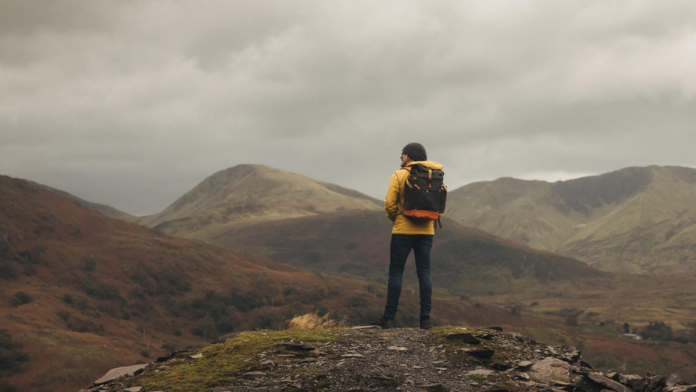Vacations are amazing opportunities to capture beautiful images, whether you’re flying to a tropical island, going for a winter trip into the mountains or simply enjoying a long weekend away to capture the Fall colors. And with powerful cameras stuffed into phones like the iPhone 16 Pro and the Galaxy S24 Ultra, along with a plethora of amazing mirrorless cameras from the likes of Canon, Sony and Fujifilm, getting stunning images packed with memories doesn’t require dragging heavy bags of kit everywhere you go.
I’ve been a professional photographer for well over a decade and have traveled the world taking photos in all conditions. Here, I’ll take you through the essential gear you need to bring with you on your trip. I’ll also recommend some extras to consider if you want to return home with creative pieces of art, rather than just holiday snaps.
Read more: Take Pro Travel Photos This Summer With These Easy Tips
Choose the right camera
While you’re unlikely going to buy an entirely new camera system just for an upcoming trip, if you’re in the market already for a new camera then an imminent vacation is a great excuse to invest. Traveling with a camera used to mean hauling a big, heavy DSLR in your backpack everywhere you go, but mercifully modern mirrorless cameras are typically much smaller and lighter, making them superb for traveling. I took just my Canon R5 and a small, lightweight 50mm f1.8 lens on a three-week trip to Sicily and loved the shots I got from this compact setup.
The R5 doesn’t come cheap, nor is it the smallest camera around, but it offers stunning image quality from its full-frame sensor, amazing video skills and has pro features like in-body image stabilization that meant I didn’t need to also drag a tripod with me. Want something a bit smaller? Look towards a micro four thirds camera like the Fujifilm X-S10 or the superb fixed-lens X100VI. Check out my guide to the best cameras if you want inspiration on which model to go for.
Katie Collins/CNET
Keeping your lens choices to a minimum will help reduce the weight. A standard zoom lens like a 24-70mm gives a great range for capturing wide, sweeping vistas, while providing enough zoom to get closer up on your subjects. I’d also recommend packing a small prime lens (like the aforementioned 50mm f1.8) as these tend to be lightweight and compact enough to always have in your bag or slung around your shoulder, ready to go whenever inspiration strikes.
Read more: Best Camera Phone for 2024
But maybe you don’t need a camera at all — today’s top phones can take amazing images and can shoot in raw format allowing for the same sort of editing you’d typically do with images from regular cameras. The iPhone 16 Pro Max takes gorgeous images — especially using Apple’s ProRaw format — and its multiple rear lenses give creative shooting options for whatever scene you find yourself in front of.
Canon’s EOS RP offers full-frame quality but in a very compact size, particularly when paired with the tiny 50mm f1.8 lens. Andrew Hoyle/CNET
The best travel tripod
A tripod certainly isn’t essential for all travel photography, but when the light fades and you need to slow the shutter speed to several seconds to get a good exposure, you’ll need one to secure your camera. You’ll definitely need a tripod if you want to nail those nighttime shots overlooking a gorgeous bay, capture the stars above those snowcapped mountains, or pull off those artful long exposures of waterfalls.
By using a sturdy tripod, I was able to slow the shutter speed right down to capture the motion of the water and clouds over the Forth Bridge. Andrew Hoyle/CNET
Again, size matters and you should look for a compact, travel tripod that can easily fit in your backpack — or attach to the outside of it. Modern materials like carbon fiber will keep the weight down, but they also tend to be more expensive, so you’ll need to decide how much you’re willing to shell out.
As its name suggests, the Peak Design travel tripod is a great tripod for traveling, thanks to its small size when folded down and its light weight. I’ve done all-day hikes with this strapped to my back and barely noticed its presence — something I can’t say for most tripods. Make sure to check out my full roundup of the best tripods you can buy. Or, if weight is really an issue, you can even try using your own DIY tripod.
Katie Collins/CNET
A proper adventure backpack
A dedicated photo bag should be high on your list. After all, you don’t want your fancy new gear getting knocked around and breaking, do you? A good bag will have compartments to keep your camera safe and secure, but will also let you access it quickly. It’s important, too, to find one that also has plenty of space to keep other items you’ll need while out and about.
If you’re going to be out with it all day, I recommend a backpack with two shoulder straps, rather than a single-strap messenger bag. It’ll spread that weight over both your shoulders and keep you comfortable for longer. Look for things like side-access zips, so you can quickly get your camera out when inspiration strikes; plenty of additional pockets for batteries and snacks; weather-resistant materials; and mounting points to help carry your tripod.
I’ve done a lot of the hard work for you in rounding up my top photography backpacks. There are options for all kinds of photography, from short city breaks to multiday hikes with lots of gear. Have a read through that list, and make sure that what you’re taking is suitable for where you’re going.
Always keeping your camera handy means you’re ever ready to shoot when you see a good opportunity. Andrew Lanxon/CNET
The important extras
The list above is really the essential stuff you’ll need to take with you. How much more you bring will depend on how seriously you take your photography and the sort of images you hope to take. Those of you going on wildlife safaris, for example, will benefit from packing a big telephoto zoom lens. Always consider having multiple spare batteries and a charger, as even the best cameras will tend to give you only a day of photos — or much less if you shoot a lot of video. There’s nothing worse than getting to a beautiful afternoon destination only to find you exhausted your power in the morning. Keeping at least a couple of spares in your bag will let you swap it out and keep on shooting into the night.
Read more: Best Accessories for Photographers
The same goes for storage. It’s easy to take hundreds of raw images a day in a beautiful location and all those shots can quickly fill up your card. Thankfully, SD cards are pretty cheap these days, so it’s worth buying a few 64GB or 128GB cards to keep with you.
Then there’s the wide array of photographic filters that may help you get creative. A circular polarizer can be used to help make blue skies more vivid, or reduce the reflection on water, while a neutral density filter darkens the image, allowing you to use long exposures to blur the motion of water, cars or people.
By using a neutral density filter, I was able to blur the motion of the water until it became a smooth and silky surface. Andrew Lanxon/CNET
If you want to shoot video on your travels, you may need additional equipment, such as microphones, higher-capacity, faster storage cards and perhaps even video tripods or gimbals for smoother, professional-looking footage. Check out my guide to the best accessories for video production if you’re keen to shoot pro-level videos on your travels.




